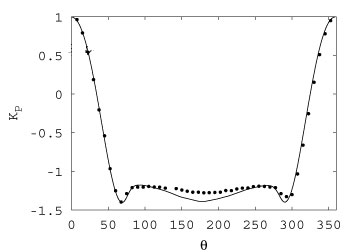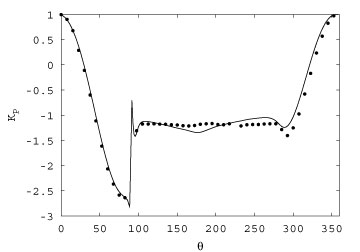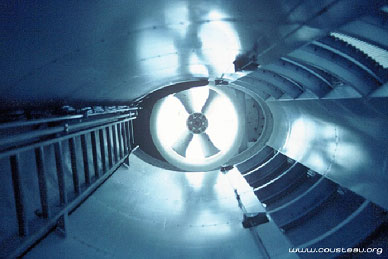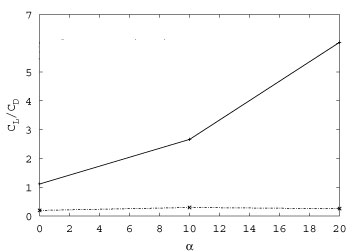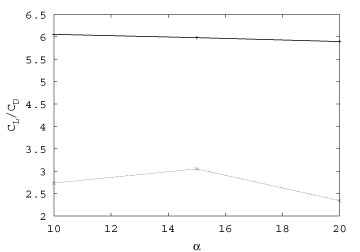The turbulent separated flows past several bluff bodies, i.e. a circular cylinder, the
Malavard-Cousteau's Turbosail and a NACA0012 airfoil, are computed by using
Large Eddy Simulations (LES). In order to modify the aerodynamic coefficients of
the circular cylinder, three different control techniques are applied: rotation,
boundary layer suction and synthetic jets. For the Turbosail and the NACA0012 profile,
only a control by boundary layer suction is used. Moderate Reynolds numbers from
Re = 2,000 to Re = 100,000 are considered in this study, corresponding to the subcritical
regime (laminar separation of the boundary layer). The control efficiency on both lift
enhancement and drag reduction is analyzed as function of the control parameters (position,
intensity...). Finally, comparisons with experimental studies carried on in LEA/ENSMA
(Poitiers, France) are shown for the flow around a circular cylinder, without and with control
by boundary layer suction, at a high Reynolds number Re = 100,000.
The LES code used has been developed in LIMSI for a decade [1]. It solves
the spatially-filtered incompressible Navier-Stokes equations written in their velocity-vorticity
formulation. The LES technique is based on the fact that most of the turbulent
kinetic energy is contained in the largest structures of the flow. Therefore, in LES, only these
structures are directly computed. The smallest scales, typically smaller than the size of the grid cell, are modeled
using a subgrid-scale model. The mixed scale model [2], developed jointly in LIMSI
and ONERA which considers both energetic and dynamical aspects
of the interaction between the large eddies and the smallest structure, is used in this study.
The flow around a circular cylinder at a high Reynolds number Re = 100,000 is first considered, without
and with control by boundary layer suction. In order to show the ability of the LES to compute high
Reynolds numbers separated turbulent flows, the results are compared with experimental results obtained
by J. TENSI and S. BOURGOIS (LEA/ENSMA). The mean pressure distribution are presented on Figure 1
without control (left) and with control by suction (right). Despite the high Reynolds number and the related turbulent
behavior with a large spectrum of spatial scales, a good agreement is recovered between the two
different approaches, either for the uncontrolled or the controlled flow, proving that LES is a good tool for
studying turbulent flows.
Figure 1: Mean pressure distribution around a circular cylinder, at Re = 100,000 without
control (left) and with control by boundary layer suction (right): present results (solid lines);
experimental results from LEA/ENSMA (dots).
The second part of this study deals with the control of flow around the Turbosail at Re = 20,000. This bluff body
was created by Malavard and Cousteau in order to create a new wind-powered boat, named Alcyone, to replace the old Calypso.
The Turbosail, an ovoid-section cylinder acts exactly like a sail, the lift force being created by a huge fan, located in the cylinder,
and sucking the flow through a permeable wall (Figure 2). In this study, the suction velocity is ten times smaller than the upstream
velocity and the suction surface, beginning at about 45 % of the profile chord, spreads over 26 % of the chord.
Figure 2: Inside view of the Malavard-Cousteau's Turbosail.
When the suction is not applied, the Turbosail has really poor aerodynamical performances as a sail. Indeed, a high drag force appears
and no lift force is observed, for the three considered angles of incidence 0°, 10° and 20°. However, when the suction is switched on, and
whatever the angle of incidence is, the performances are sharply improved and the Turbosail may then be considered as a very efficient way to
move a boat. The influence of the suction on aerodynamic coefficients can be shown on Figure 3 (left).
Figure 3: Influence of a boundary layer suction on the aerodynamic coefficients on the Turbosail (left) and a NACA0012 profile (right)
as function of the angle of incidence. The uncontrolled flow is represented by solid lines whereas the dotted-dashed pattern stands for the
controlled flow.
Finally, the flow around a thin wing profile (NACA0012) for Re = 10,000 is considered. The suction is here applied on a surface of 12 % of the chord,
starting close to the upstream stagnation point, with a suction velocity ten times smaller than the upstream
velocity. On the opposite of the Turbosail, the NACA0012 has a great lift-on-drag ratio even when no suction occurs. Nevertheless,
the suction is able to raise this ratio up to very high values, proving that this kind of control techniques is not only able to create a
lift force, but also to enhance it (Figure 3(right)).
In addition to the efficiency improvement, the suction can also greatly modify the flow patterns, such as the vortex shedding. Indeed,
it can be observed on Figure 4 that when a suction is applied, the shed vortex are smaller than they would be in the uncontrolled case.
The main reason is that the boundary layer separation is delayed by the suction. The wake thickness and consequently the typical size of the
vortex are then reduced.
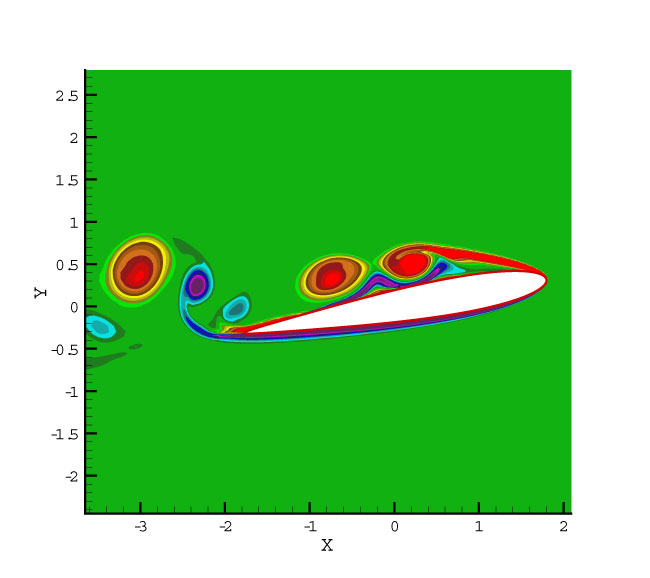
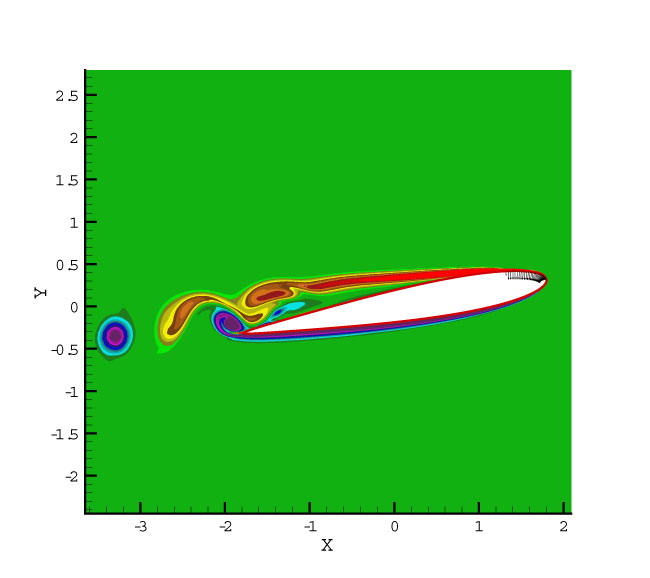
Figure 4: Influence of a boundary layer suction on the vortex shedding from a NACA0012 profile for an angle of incidence of 10°.
Left: Uncontrolled flow; right: Control by suction.
Two main conclusions can be drawn about this study. First, the ability of Large Eddy Simulations to predict high Reynolds number separated turbulent flows has been proved by means of comparisons with experimental results (LEA/ENSMA), even if a control by suction is applied.
The control by boundary layer suction has then been shown to be of great interest to modify the aerodynamic coefficients, either for a bluff body or for an airfoil.
Moreover, the suction can also strongly modify the vortex shedding pattern and appear to be a good method to reduce Vortex-induced Vibrations on
airplane wings for instance.
Several other means of control have to be checked in the future, mainly synthetic jets which are known to be rather efficient as a flow control technique, consisting of a half-period suction followed by a half-period blowing to ensure that there will be no net mass injection in the flow.
In addition, because of the high Reynolds number considered here, the influence of the suction in the spanwise direction might also be investigated.
This study is part of Guillaume Fournier's PhD Thesis, defended on May 26th [3].
